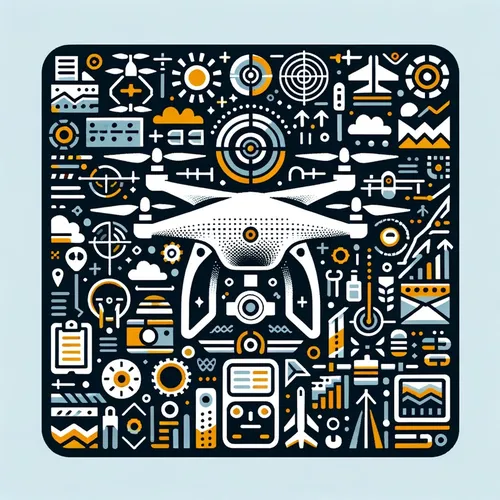Drone Dynamos: Soaring Profits, Plunging Risks, and Juicy Secrets from the Cockpit
- Author
- Quiet. Please
- Published
- Sun 04 May 2025
- Episode Link
- https://www.spreaker.com/episode/drone-dynamos-soaring-profits-plunging-risks-and-juicy-secrets-from-the-cockpit--65900697
This is you Professional Drone Pilot: Flight Tips & Industry Updates podcast.
Professional drone pilots today face a rapidly evolving landscape, with advanced technology and shifting regulations continually raising the bar for commercial operators. Mastering advanced flight techniques such as waypoint navigation, precision orbiting, and maintaining consistent altitudes for mapping is essential—especially as clients increasingly demand sophisticated data products and cinematic footage. Regular recalibration of sensors and proactive battery maintenance can dramatically extend operational readiness and flight safety, while firmware updates and pre-flight checklists reduce downtime from avoidable technical issues.
The commercial drone sector continues to expand, with infrastructure inspections, real estate, and agriculture among the fastest-growing markets. Recent data shows that infrastructure inspections using drones can lower operational costs and reduce safety incidents by as much as ninety percent, as they accomplish in hours what previously took days. This efficiency has driven market demand for pilots trained in both flight and post-processing analytics, prompting many companies to seek specialists who can deliver actionable insights from aerial data. Building a diverse portfolio—showcasing mapping, thermal imaging, or 3D modeling samples—remains a key strategy for attracting high-value clients and distinguishing your services from competitors.
Recent updates from the Federal Aviation Administration underscore the importance of regulatory compliance. All commercial pilots must maintain a current Remote Pilot Certificate, which requires completing recurrent training every twenty-four months and registering each aircraft. Since September 2023, drones requiring registration must broadcast remote identification information, further enhancing accountability and safety. International operators should ensure they understand local and cross-border rules, particularly as more countries harmonize their certification standards.
Weather awareness remains a cornerstone of safe operations. Frequent changes in wind, temperature, and precipitation can affect battery life and flight reliability, making pre-flight weather assessments and real-time monitoring critical for mission success. Insurance and liability management have grown equally important; many clients now expect proof of comprehensive coverage before awarding contracts due to industry-wide concerns over potential property damage or data breaches.
The business side of drone operations is also evolving. With growing competition, transparent pricing strategies, clear deliverables, and prompt communication are pivotal for client retention. As the sector matures, it is anticipated that artificial intelligence-powered flight planning and autonomous inspection routines will become mainstream, unlocking new efficiencies and market niches.
For practical action, pilots should schedule their recurrent FAA tests, review equipment after each mission, and stay informed on regional drone legislation. With infrastructure investment surging and regulations becoming more stringent, those who prioritize skill development, compliance, and client-centric strategies will lead the next wave of commercial drone innovation.
For more http://www.quietplease.ai
Get the best deals https://amzn.to/3ODvOta
